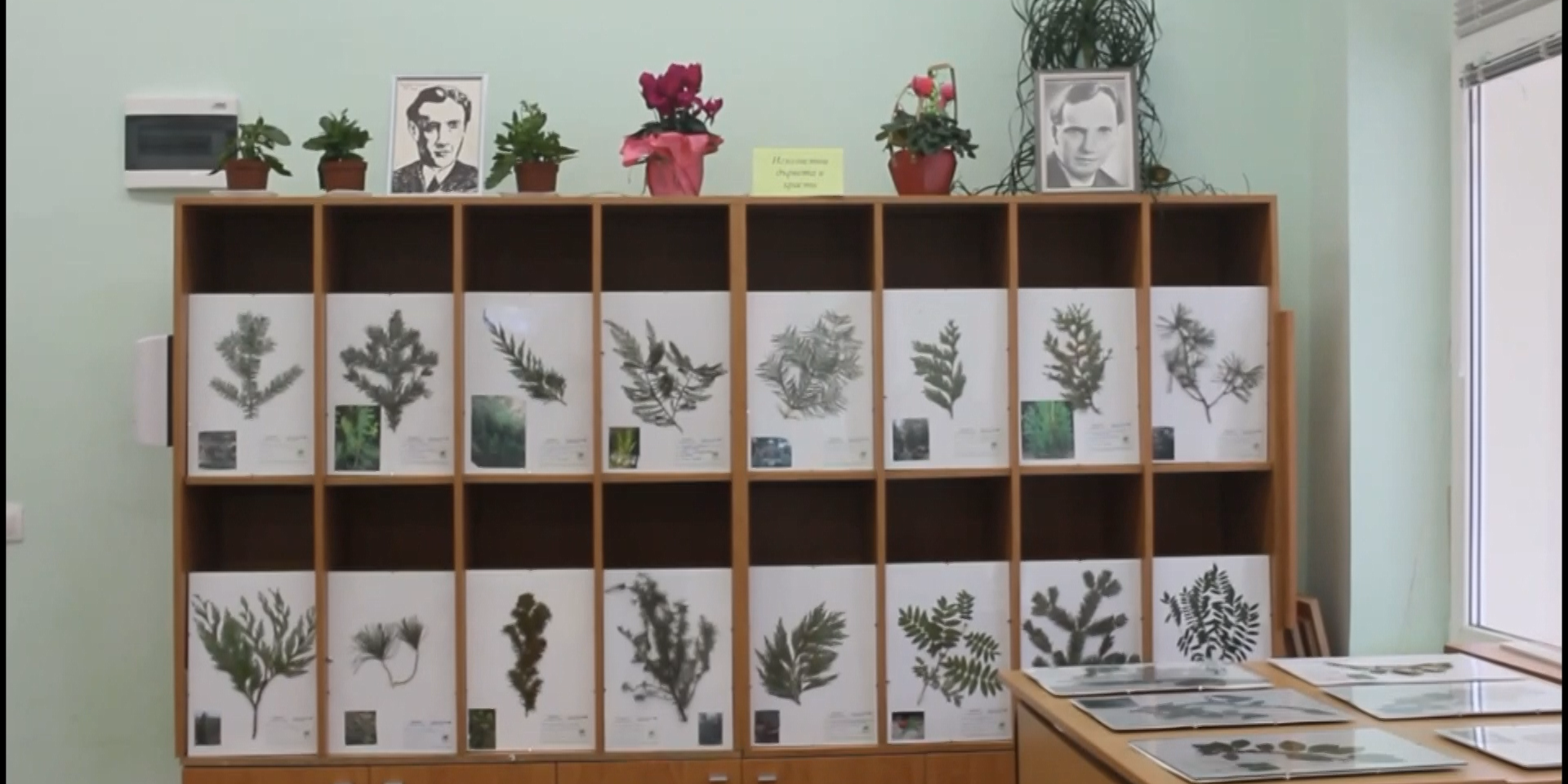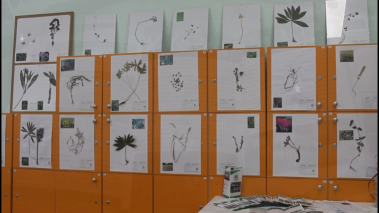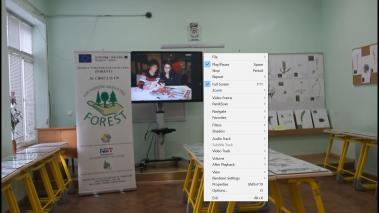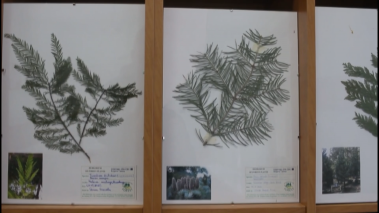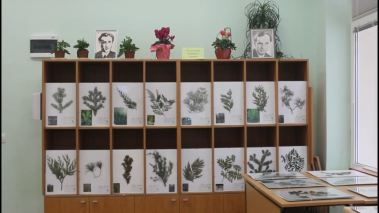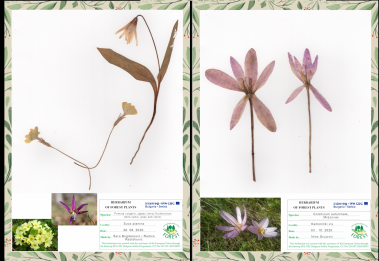
Interreg – IPA CBC Bulgaria – Serbia Programme
CCI Number 2014TC16I5CB007
THREE EXHIBITIONS OF HERBARIUMS MADE BY YOUNG PEOPLE UNDER THE FOREST PROJECT
A unique exhibitions were presented on February 10 and 17 and March 9, 2021 in the cities of Botevgrad, Etropole and Pravets. Over 150 plant species of woody, shrubby and herbaceous plants collected and prepared personally by the young people participating in the project „For everyone saved a tree“ (FOREST) decorated the halls of local schools and community centers for a week. Scientists-experts in botany, genetics and dendrologists guided the work of the young people and in parallel with their help with the preparation of herbariums, they presented to the children the silvicultural, medicinal and honey benefits and conservation significance of the plants.In addition to the knowledge in recognizing the species, the young people also gained basic experience of plant biodiversity in the forests of the cross-border region. The diversity of living organisms called biodiversity is the most valuable and supreme gift of Nature and for our small country in this respect it has been especially generous. The flora of Bulgaria includes about 4783 plant species. It represents about 36% of the total flora of Europe and is nearly 1,500 species more than the flora of Poland, 1,000 species more than Germany and 500 species more than Romania. A part of the species included in it (about 17%) are plants that reproduce by spores. These are mosses and ferns. There are about 719 species of mosses in our country or 15% of the entire flora of the country. Although their simple structure , they are very durable and play the role of pioneers on bare rocks, where they create conditions for the development of ecosystems, and subsequently become part of the ground floor of plant communities and actively participate in the cycle of substances in them. Mosses are excellent indicators of air pollution with heavy metals and are invaluable helpers in the so-called. biomonitoring. Ferns are about 1% or 45 species of the flora of Bulgaria. These include lycophytes such as spikemoss, horsetails and real ferns. Once 400 million years ago, they dominated the earth with their gigantic size, and today you will find them in humid forests and rocks, as they need water for their reproduction. Among the ferns there are many herbs such as the Phylittis scolopendrium, which helps with cough, Asplenium trichomanes used against panic attacks or Athyrium filix – faemina, which cleanses the body and improves metabolism. But spore plants (mosses and ferns) occupy a more modest place in our flora. The greatest variety in it have the so-called seed plants, which instead of spores are propagated by seeds. Some of them are called gymnosperms and most of them are easy to recognize because they produce cones and have leaves resembling green needles. There are 17 species of gymnosperms in our flora. These include many major species that create the appearance of our forests in the so-called. coniferous belt in the mountains above 1500 m above sea level.
The most flexible in terms of humidity among them are Juniperus sp., Pinus nigra and Pinus sylvestris, and the most resistant to low temperatures are Pinus mugo and Pinus peuce, which form the upper border of the forest. In addition to quality wood, conifers are used as medicinal and honey, and their resin is used in the chemical industry for the production of adhesives, varnishes and perfumes. Angiosperms are also called flowering plants because they form flowers and are the largest group in our flora – about 79% or 3849 species. They are divided into two major classes – Monocotyledones and Dicotyledones. Monocotyledone s include cereals, sedges, orchids and others. And angiosperms include all our deciduous trees and shrubs and a variety of flowering annuals and perennials. Trees, shrubs and semi-shrubs (deciduous and coniferous) are about 400 species or 8.2% of the country’s flora. Among the deciduous trees, the main species in our forests are the oaks which occupy the so-called lower (oak) belt in our forests – from 0 to 800 m above sea level. Above them are the forests of another deciduous tree species – beech (between 800 and 1600 m above sea level), often accompanied by hornbeam and maples . Each forest is a unique community in which, along with the main tree species, there are characteristic shrubs and herbaceous plants. The plant richness in our nature is enormous, but with it is bequeathed to us the great responsibility for its preservation. The protection of a forest is related not only to the prevention of arbitrary felling of tree species, but also to the adoption of measures to protect all plant diversity in it. The Red Book of Bulgaria includes 550 species (about 14% of the flora), most of which fall into the category of „critically endangered“. There are 770 species of medicinal plants in our country (19%) and 1110 species of honey plants (28.5%). Each plant is unique in its ability to sustain life on the planet. Plants can restore any disturbed ecosystem if we humans give them a chance, if we help them survive, so that we ourselves can survive as a species no different from the other species in this world. We need to realize that in addition to the richness of living things, biodiversity also means coexistence and interconnectedness between them, which we humans can destroy or preserve. And so for everyone who saved a tree will remain the responsibility to continue, to teach others, for everyone who saved a tree will remain the joy of seeing it bloom and bear fruit for him, for his children, for everyone who saved a tree…
This activity is implemented under project “For everyone saved a tree (FOREST)”. The project is co-funded by EU through the Interreg-IPA CBC Bulgaria–Serbia Programme.
This publication has been produced with the assistance of the European Union through the Interreg-IPA CBC Bulgaria-Serbia Programme, CCI No 2014TC16I5CB007. The contents of this publication are the sole responsibility of FRI-BAS and can in no way be taken to reflect the views of the European Union or the Managing Authority of the Programme.




